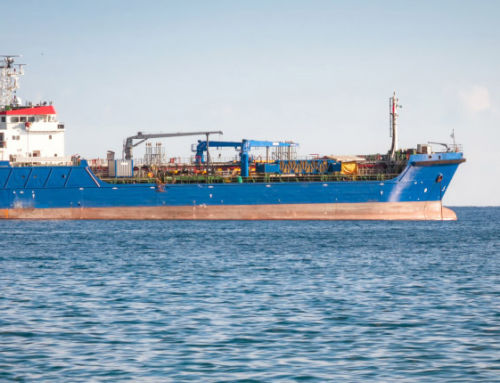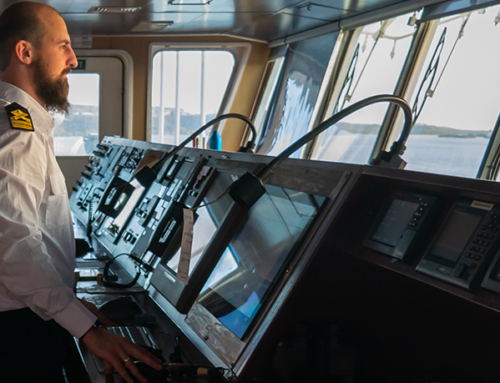Not all of us can be Jack Sparrow and commandeer the Black Pearl. Most of us operating a maritime business are more like the Ancient Mariner but the albatross around our neck is compliance. Regulations might be difficult but following them can enhance efficiency and productivity on ship. One such category of regulations is work and rest hours.
One of the key contributors to incidents in the marine industry is fatigue. The rest hour regulations aim to minimize, if not completely avoid, fatigue among the crew. The only problem is that compliance is complicated with the multiple different guidelines. Plus, you don’t just need to ensure that the crew is well rested, you need to prove it to the authorities too. But when proving that you’ve met the rest hour requirements, you also need to produce multiple other documents, such as drill records, bunkering operation timings, enclosed space entry permits, tank cleaning records, bridge watch levels, port arrival and departure timings and more.
An inability to prove rest hour compliance could lead to adverse consequences, not the least of which is detention of your vessel by port control. To avoid any such eventualities, the first step is understanding the various work and rest hour regulations. So, here’s a look at the two most important frameworks.
The ILO Maritime Labor Convention (MLC)
The ILO MLC, established in 2006, is followed by all member nations of the convention. The work and rest hours guidelines under the MLC apply to all vessels that are:
- Engaged in voyage via sea
- Privately or publicly owned
- Engaged in commercial operations via sea, such as the transport of passengers or cargo
- Vessels engaged in fishing operations
- Vessels that are below 500 gross register tons
- Vessels of traditional design, including dhows and junks
- Estuarial vessels.
Under the MLC, a ship’s working hours need to be limited to:
- 8 hours per day, with one rest day, under normal circumstances
- 14 maximum working hours in any 24-hour timeframe
- 72 maximum working hours in any 7-day timeframe
- A minimum of 10 hours of rest in any 24-hour timeframe.
So, the minimum rest hours work out to be:
- 10 hours minimum in any 24-hour timeframe
- 77 hours minimum in any 7-day timeframe.
- Rest hours can be divided into a maximum of 2 periods, of which one needs to be at least 6 hours in length.
- Two consecutive rest periods should not be more than 14 hours apart.
In case a seafarer is needed to be on call during their rest hours, they should be provided with a compensatory rest period. Also, all operations mandated by national laws or regulations, such as firefighting drills, lifeboat drills and more, should be planned in a way that they minimally disrupt the rest periods.
The ship’s work and rest hours for every member of the crew also need to be displayed in an easily accessible place, so that everyone can stay informed of the timings. Also, under the MLC, the ship needs to maintain a log with the records of the work and rest hours of every crew member.
The only exception for all the above is when the master of the ship determines that the services of a particular crew member is required in view of the safety of the ship, especially if there is an emergency situation. The master can, therefore, suspend the work and rest hour schedule during times of distress for the vessel till normalcy is restored. Once normalcy is determined, all seafarers who were working through the distress period should be granted rest to prevent fatigue build up on ship.
In addition, any crew member, including engineer and deck officers, cadets and apprentices, who have worked beyond the prescribed limits, will be entitled to compensatory rest hours and their additional work hours will be viewed as overtime. This means they could be eligible for overtime renumeration as well.
The STCW 2010
The 1978 International Convention on Training, Certification and Watchkeeping for Seafarers, more commonly known as the STCW Convention, was significantly revised through a diplomatic conference held in Manila in June 2010. The earlier-mentioned ILO MLC and STCW 2010 are today known as two of the four pillars of the global regulatory system for the maritime sector.
Under the STCW 2010, the mandated work and rest hours should comply with the following:
- A minimum of 10 hours of rest in any 24-hours timeframe
- A minimum of 77 hours of rest in any 7-day timeframe
- The rest hours can be divided into no more that two periods, of which one should be at least 6 hours
- Two consecutive rest periods should be more than 14 hours apart
There is an exception to the requirement for 77 rest hours in any 7-day period. Under the STCW 2010, exceptions can be allowed provided:
- The rest hours are not less than 70 hours in any 7-day timeframe
- The exception is not permitted for more than 2 consecutive weeks
- If the exception has been used for 2 consecutive weeks, the next exception can only be used after 4 weeks.
- There is also an exception to the 10 rest hours not being divided into more than 2 periods, with one period being at least 6 hours in length. Here:
- The 10 hours of rest can be divided into a maximum of 3 periods
- One of these periods has to be at least 6 hours long
- The other two periods need to be at least one hour long each
- The exception cannot be extended beyond two 24-hour timeframes in any 7-day period
- If the exception was used thrice in the 7-day period, it will be considered a violation of the rest hour requirements.
In addition, time spent on drills and training need to be entered as work hours. However, for compliance with the rest hour guidelines, they will not be counted as work hours.
While all this might seem tedious, especially when records need to be manually entered and maintained. Fortunately, there advancements in technology have brought us Rest Hour Management software that can save us significant time and effort, while easing compliance.






Leave A Comment